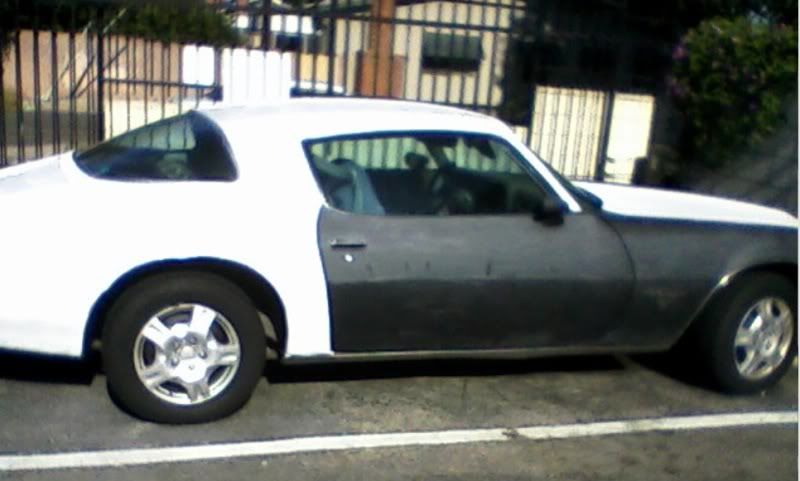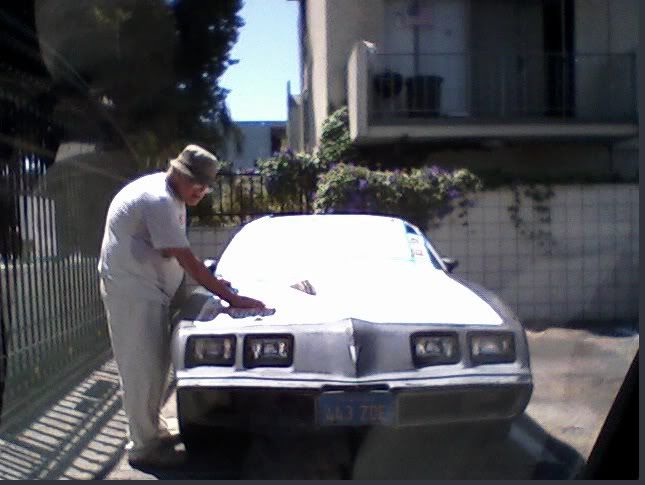Hello
Today I decided to detail my old Vectra for the first time
It was repainted many many times since manufactured in 1995, and my guess that it has a pretty thick layer of paint & prime (havent measured that though)
Paint color is dark blue, had severe cobwebs, many random light scratches, orange peel (although the paint is soft), and lost most of it's gloss already (looks pretty dull)
Last paint job was done 6 months ago, so I'm pretty sure it's cured
So, washed my car, dried it, clayed it with a mild clay bar and last touch, then started buffing...
I started with a foam cutting pad, using #84, and a rotary buffer at speed 3.5
I applied much pressure, and went through different passes in overlapping lines... Then I noticed that this combination was actually doing nothing
However, the pad was colored in blue, so I knew that my car uses a single stage paint
So, I decided to move up in the scale, and again, using a cutting pad, and #85, and some aggressive buffing
I noticed a very slight enhancement
So I finally moved to my wool cutting pad using #85, and started to buff aggressively...
Only with that combination, I started to see some noticeable difference
Cobwebs became fewer, and the paint started to shine again
I continued with this combination for the rest of the hood, and the hood was somehow shinning (Had to reapply the compound to the pad for atleast 6 times using those X marks), with some cobwebs still existing, and the same orange peel appearance (although the paint was very soft and polished)
I also noticed that the process left no swirl marks at all.... Although I expected from the wool pad to leave much
Next, I started to go down the scale again to add more shine
So I used a polishing pad, with #84... Which actually added nothing to what I already had
So I knew that this is the best I can have
Plenty of questions in my mind...
1. Is claying really a mandatory step ?? The clay bar is somehow expensive, and the paint was soft before and after claying, and I really didnt notice any difference after claying, and the clay bar wasnt collecting any dirt
2. Why didn't the wool pad leave any swirl marks ? I was using much pressure, and was moving slowly using #85
3. Why is there still some cobwebs, although I used this aggressive combination... Do I need to move to #95 or #105 ??
4. I always hear that single stage paints are easier to buff... Why #85 alone didnt do the job ?
5. Why did the wool pad added gloss to the paint, rather than cutting through the paint ?
6. Why I couldnt get some extra shine when I moved down the scale again to #84 and even #83?
7. That stupid orange peel effect... I can see it but I can never feel it with my hand... The paint is really soft... Any way to remove it ?
8. How to clean those colored pads ? I thought of using some thinner... Would that hurt the pad ?
9. I'm consuming too much product during the process... Buffing only the hood needs at least 6 X marks... I reapply the product when I see that the old application is almost dry (both the hood and the pad), and I know that dry buffing is dangerous, so I reapply again... Is this normal ?? Is there a way to cut some costs here ?
10. The surface was somehow hot when I started the process... Did that affect anything ?
Sorry for the too much questions
It's just that I want to understand everything and build my technique
Thanks in advance !
Today I decided to detail my old Vectra for the first time
It was repainted many many times since manufactured in 1995, and my guess that it has a pretty thick layer of paint & prime (havent measured that though)
Paint color is dark blue, had severe cobwebs, many random light scratches, orange peel (although the paint is soft), and lost most of it's gloss already (looks pretty dull)
Last paint job was done 6 months ago, so I'm pretty sure it's cured
So, washed my car, dried it, clayed it with a mild clay bar and last touch, then started buffing...
I started with a foam cutting pad, using #84, and a rotary buffer at speed 3.5
I applied much pressure, and went through different passes in overlapping lines... Then I noticed that this combination was actually doing nothing
However, the pad was colored in blue, so I knew that my car uses a single stage paint
So, I decided to move up in the scale, and again, using a cutting pad, and #85, and some aggressive buffing
I noticed a very slight enhancement
So I finally moved to my wool cutting pad using #85, and started to buff aggressively...
Only with that combination, I started to see some noticeable difference
Cobwebs became fewer, and the paint started to shine again
I continued with this combination for the rest of the hood, and the hood was somehow shinning (Had to reapply the compound to the pad for atleast 6 times using those X marks), with some cobwebs still existing, and the same orange peel appearance (although the paint was very soft and polished)
I also noticed that the process left no swirl marks at all.... Although I expected from the wool pad to leave much
Next, I started to go down the scale again to add more shine
So I used a polishing pad, with #84... Which actually added nothing to what I already had
So I knew that this is the best I can have
Plenty of questions in my mind...
1. Is claying really a mandatory step ?? The clay bar is somehow expensive, and the paint was soft before and after claying, and I really didnt notice any difference after claying, and the clay bar wasnt collecting any dirt
2. Why didn't the wool pad leave any swirl marks ? I was using much pressure, and was moving slowly using #85
3. Why is there still some cobwebs, although I used this aggressive combination... Do I need to move to #95 or #105 ??
4. I always hear that single stage paints are easier to buff... Why #85 alone didnt do the job ?
5. Why did the wool pad added gloss to the paint, rather than cutting through the paint ?
6. Why I couldnt get some extra shine when I moved down the scale again to #84 and even #83?
7. That stupid orange peel effect... I can see it but I can never feel it with my hand... The paint is really soft... Any way to remove it ?
8. How to clean those colored pads ? I thought of using some thinner... Would that hurt the pad ?
9. I'm consuming too much product during the process... Buffing only the hood needs at least 6 X marks... I reapply the product when I see that the old application is almost dry (both the hood and the pad), and I know that dry buffing is dangerous, so I reapply again... Is this normal ?? Is there a way to cut some costs here ?
10. The surface was somehow hot when I started the process... Did that affect anything ?
Sorry for the too much questions
It's just that I want to understand everything and build my technique

Thanks in advance !











Comment